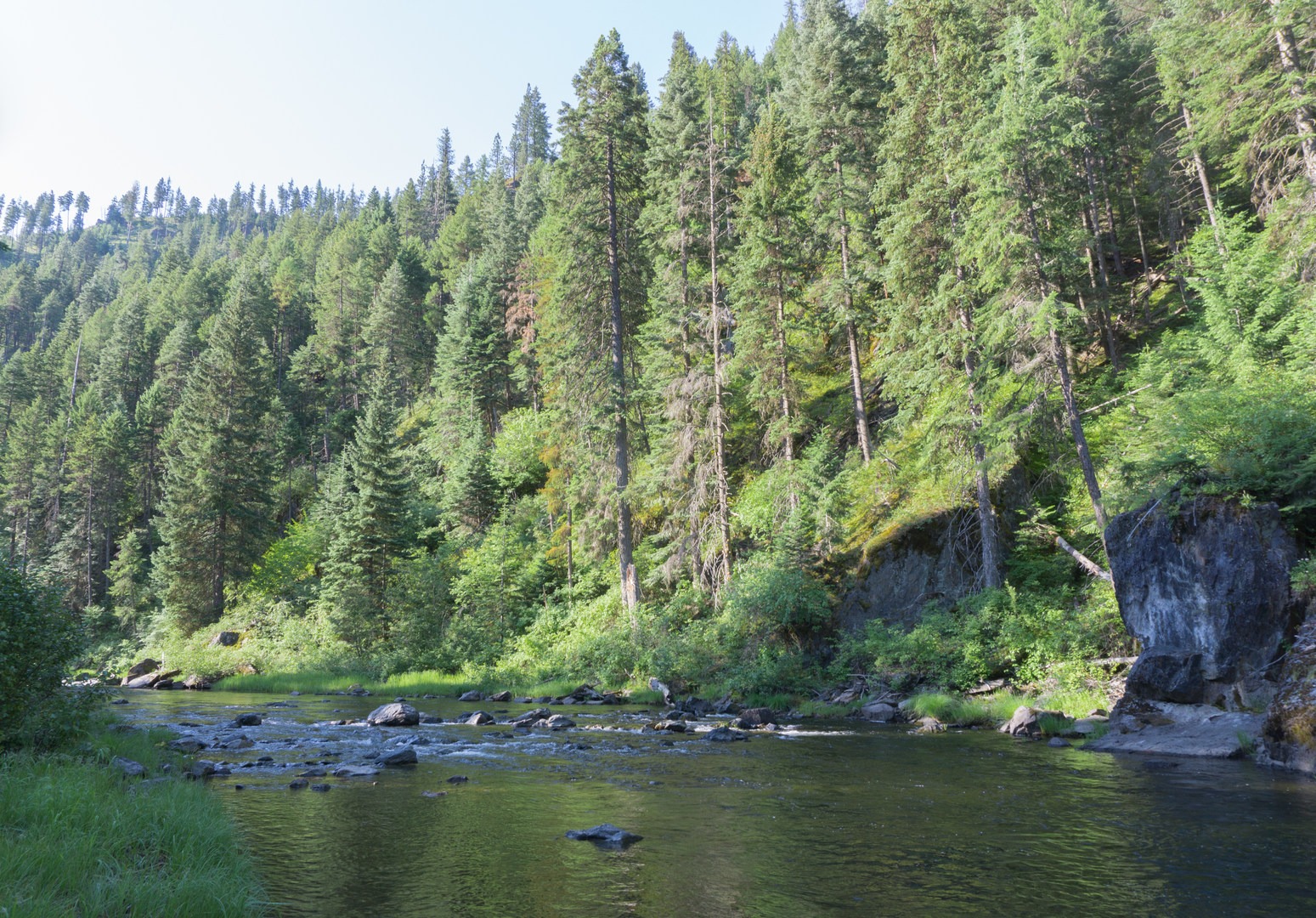You are here
The North Fork John Day Wilderness in Eastern Oregon's Blue Mountains offers miles of trail in parts that are rarely visited. The wilderness trail bearing the river's namesake travels for nearly 30 miles through old-growth forest. Overgrown in many sections, the trail is open to hiking and horseback riding year round, but at times it may become impassable from snowfall. The more popular trailhead along the river is a few miles north of Granite, Oregon, but this adventure description leaves from Oriental Creek Trailhead and proceeds upstream and slightly uphill.
Oriental Creek intersects the North Fork John Day River after nearly 12 miles on a bumpy dirt road. The Oriental Creek Campground marks the end of the road, and a gate blocks vehicle travel on the trail's first 3 miles. Visitors once could drive this road to reach the former wilderness trailhead at Big Creek, but in recent years this road has been decommissioned and is no longer passable. A parking area at the end of the road has plenty of space to park, and no fees or permits are required to park here for the duration of your trip. Make sure to not leave any valuables in your vehicle.
At Big Creek, cross the wooden bridge and proceed along the river for as long as you would like. A trail marker overlooking the river indicates you are on the right trail, and from here it's nearly impossible to get turned around. The trail proceeds upstream through many densely overgrown thickets, down along the river, and back upslope. The trail is flanked by tall canyon walls that are tightly packed with some of the last remaining old-growth found in Eastern Oregon, and the lush green trees, tall grasses and wildflowers, and native fruits (both strawberries and huckleberries), juxtapose just how much the riparian landscape has changed from a long history of timber harvesting activities. Ponderosa pine and Douglas fir tower above the trail for its entire length.
Undeveloped campsites are found every mile or two along the trail. These vary in quality: some have roughly constructed fire pits, and others are just open areas where there is space to put up your tent for the night. Considering how few visitors come through, all are fairly overgrown. Be wary of ticks, especially in early summer. It is recommended to also bring mosquito repellent and be cautious of rattlesnakes along the river, as they are regularly encountered in Eastern Oregon.
Because there are few human visitors to this area, you are likely to encounter great wildlife along the trail. This includes beavers, bald eagles, kingfishers, mergansers, tanagers, mule deer, elk and the possibility for coyotes, black bears, cougars and wolves. The river hosts spawning wild trout, and if you enjoy catch-and-release fishing, consider brining a fishing rod.
As a long wilderness trail with access points at either end, the North Fork John Day River Trail can be done as a there-and-back day hike, overnight backpacking trip, or a one-way hike with a shuttle at the other trailhead. However, you will need to set up the shuttle yourself with two vehicles or by attempting to arrange a ride in advance. Observe all posted regulations on your visit, especially fire restrictions that generally start in early June and prohibit all open campfires.
Logistics + Planning
Current Weather: Powered by Dark Sky
























Comments
Sign In and share them.